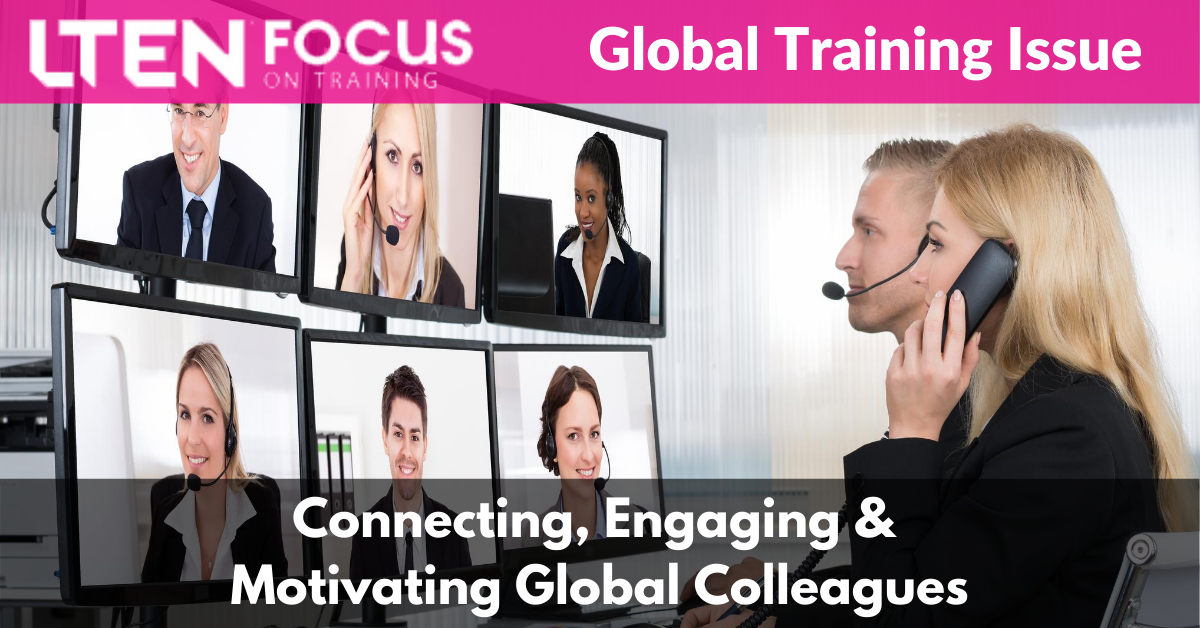
Connecting, Engaging & Motivating Global Colleagues
FEATURE STORY – By Briony Frost
Being able to communicate succinctly and memorably are essential.
The virtual realm increasingly offers solutions to the current challenges facing the world and the healthcare industry. Delivered effectively, digital interactions, tools and training can be used to reach global audiences to meet a wide range of healthcare needs.
Adaptations to working practices, particularly for sales and medical teams, during the present pandemic are paving the way toward a new normal through opportunities such as:
- Replacing face-to-face communications with effective digital interactions.
- Using former travel time for training.
- Digitally connecting, engaging and motivating global colleagues and networks.
Maximizing Virtual Interactions
Lockdowns across the globe have forced many interactions that used to take place face-to-face into the digital sphere. For sales and medical teams, interactions with healthcare professionals (HCPs) now more than ever depend on delivering maximum impact and value as patient-facing time is (rightly) prioritized. Confidence and proficiency with relevant technologies and being able to communicate complex data and messages succinctly and memorably are essential.
The following will help your medical and sales teams succeed in the current situation – and they’re good practices to use for other types of virtual interaction too:
- Create checklists for interactions: Why are you meeting, who is the audience, what is your meeting format and how will you participate to make sure everyone is on the same page ahead of time?
- Run troubleshooting sessions for known and reported technological issues.
- Survey knowledge gaps to identify additional training needs with content, technology and competencies.
- Send out regular top tips to build up and reinforce the skills of those you’ve trained.
- Set common expectations around digital interactions that enable everyone to engage effectively, such as:
- Activating webcams to promote connectedness;
- Wearing headsets, using mute and turning off notifications to minimize background noise;
- Using closed captions to facilitate conversations with the hearing impaired or non-native speakers; and
- Having someone act as a chair to manage discussions.
There are a huge range of tools available to support successful virtual interactions. However, the best tools are only as good as the people who are using them.
The best programs will allow you to learn independently, interactively and immersively, combining live and on-demand methods.
 Time to Train
Time to Train
There is never enough time to train. Yet, to stay on top of your game, you need to regularly update your knowledge, hone your competencies and boost your confidence. Replacing face-to-face interactions with virtual ones, particularly where daily or extensive traveling would be involved, means time can be reclaimed and channelled into professional development to ensure your team can meet new and ongoing challenges. Providing bespoke, high-quality, clinically relevant, self-directed and outcome-focused learning programs enables field teams to maximize their potential.
Here are a few ways good training programs can enable your staff to maintain their status as credible partners in the healthcare community:
Stay Up to Date With the Data and Clinical Landscape
As lockdowns ease across the globe, many people are questioning the practicalities of their previous travel practices and looking to replace unnecessary journeys with digital interactions. Field-based medical science liaisons can recoup significant amounts of time by reducing time on the road and using it to focus on broadening and deepening their scientific knowledge.
Whether you want to develop new knowledge, update your current understanding or refresh your memory on disease and therapy areas, time once spent driving can be used to train and connect professionally with colleagues via digital networks. From video conferences and webinars – with live polls, talks and Q&As – to interactive workshops, discussion forums and pod- and slide-casts with self-assessments and feedback, there are numerous ways to learn online.
The best programs will allow you to learn independently, interactively and immersively, combining live and on-demand methods for accessing scientific content. The very best do more than just enhance your existing knowledge – they build competencies and confidence too.
Communicating Complex Data and Messages Swiftly
Professional competencies emerge from the demonstration of scientific content knowledge through skills to achieve desired outcomes. Both knowledge and skills development work better when they’re delivered hand-in-hand.
With ever-increasing pressures on HCPs’ time, it’s more important than ever to ensure that field teams can transmit key information effectively and efficiently. Rather than training content alone, consider training programs that accomplish the following as well:
- Embed communications skills such as distilling, prioritizing and presenting essential information to refine medical messaging practices. Save time and improve efficiency by integrating real-world, applicable scenarios into scientific knowledge training so that you can practice using knowledge and skills together rather than training and practicing each separately.
- Synchronize materials with real-life roles. Often, the biggest challenge when creating materials for HCPs is ensuring that the content you have available has been designed and approved in such a way that it is easy to repurpose, adapt and deliver in virtual formats. While this can be achieved retrospectively, it’s more efficient if it is factored in at the design stage.
- Whether your training is developed in-house or outsourced, select programs with content that is built to be reused in professional contexts.
Digital Communications Skills
If the content above regarding virtual interactions made you realize your team isn’t leveraging technology to its full potential, training to enhance their competence and confidence in this area can have a big impact. From virtual conferences and webinars to simple one-on-one phone and video calls, your ability to navigate remote technologies will be critical as working patterns and practices across the globe continue to evolve in the coming months and years.
With increased traffic on all these channels, you need to know how to make the best use of the time and tools available for your audience no matter where they are in the world. Select training positioned at the intersections between knowledge and technology, not just how technologies are used to do the training but how they will be used in your team’s professional lives. Programs should enable you to train using the virtual tools you will use in your role to boost your confidence and give you practice moving work into the virtual environment.
Being able to see the rest of the team boosts engagement in the discussion and increases the feeling of connection.
 Engagement, Motivation and Connection
Engagement, Motivation and Connection
Although field teams may be used to some remote working, it’s not quite the same as being primarily homebased, and remote working may not be so common for the rest of your medical affairs teams. A few simple techniques can ensure that team members don’t start to feel disconnected, isolated and demotivated:
Maintain Connections
Set up regular touchpoints and encourage everyone to use their webcam or have a good photo of themselves on their profile picture – being able to see the rest of the team boosts engagement in the discussion and increases the feeling of connection.
Chat Is Good!
Ensure you have an outlet for more informal social interactions throughout the day and set the tone that some non-work discussion is positive. You’ll also find that people share a lot of work-related content, best practices and interesting ideas.
Get Competitive
Consider running team competitions virtually, such as quizzes, crosswords, word searches, puzzles, virtual boards, etc. These are all relatively simple and quick to create and distribute. These could include knowledge reinforcement questions for double value and are also a great way to get people to discuss data, as well as potentially highlighting knowledge gaps.
Be Mindful of Digital Overload
Efforts to keep people connected, motivated and supported can easily go into overdrive and achieve the reverse of what was intended. Set expectations in the digital space about what is required and what is voluntary, whether for day-to-day work activities, training or social interactions. Offer a range of connection and training opportunities so people can make choices to suit their preferences, working patterns, and even time zones. Pace your communications too: stagger the number of invitations per week to avoid overwhelming inboxes and limit to a few successful channels.
Digital fatigue is a real risk the more we move into the virtual environment, so make sure every remote engagement has benefit for your teams, for HCPs and for patients.
Briony Frost is learning design and development specialist for OPEN Health. Email her at brionyfrost@openhealthgroup.com.









